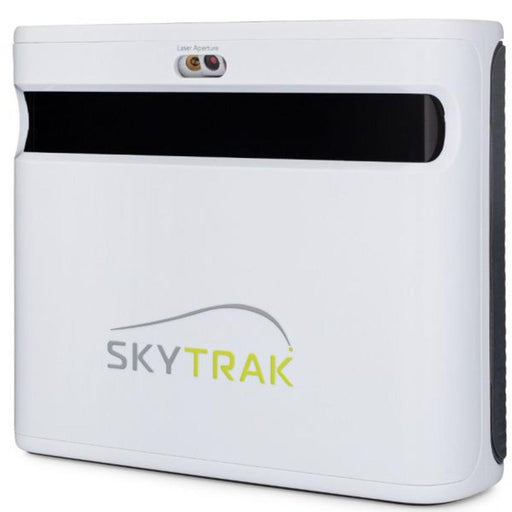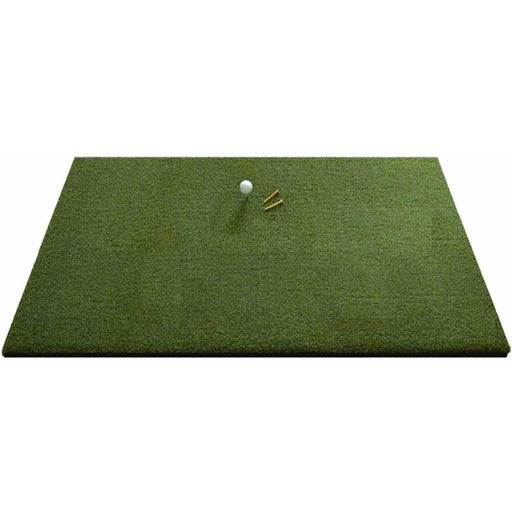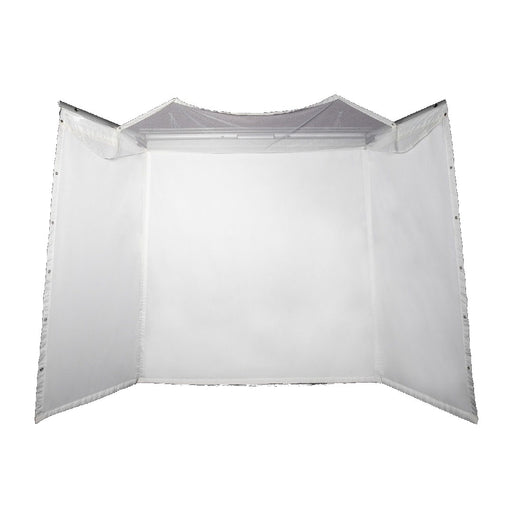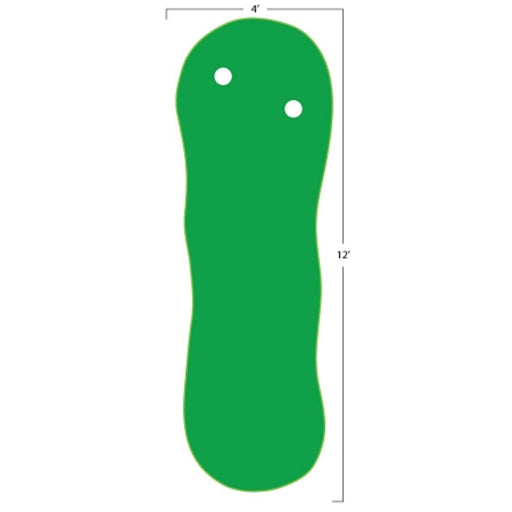
How the Pros Use Golf Simulators
While it is well understood that golf simulators give you a ton of options and insights when it comes to practicing your golf game, many golfers still don't entirely see the value in such a purchase. The truth is, the advantages that come from hopping on a simulator, even only a couple of times a month, are invaluable to developing your game.
Golf simulators today are incredibly accurate and allow you to fine-tune your game using data-driven insights. The majority of golf simulators rely on radar-based technology to track and compile data on the shots you take. This data can include spin rate, club speed, launch angle, ball speed, and much more.
So golf simulators are helpful, but are the pros using them? Of course!
These days it's hard to find a professional golfer who doesn't have some sort of golf simulation setup in their home. In this article, we wanted to look at how pros are using golf simulators to improve their games and what lessons they have for us when it comes to practicing at home.
In this article:
- Stuck at Home? Don’t Let Your Swing Fall Apart.
- A look at NCAA Training Regimes
- 5 Guided Practice Concepts
Stuck at Home? Don’t Let Your Swing Fall Apart.
This pandemic taught us that you never know when you may be forced to take some time away from the course. Another thing some of us learned the hard way, packing on pounds (either in fat or muscle), and taking time away from the course, can severely impact your swing.
Bryson DeChambeau is using golf simulators to ensure that his gains in muscle are translating into a more powerful yet still accurate swing even without being on a course.
In a piece for ESPN, golf pro Bryson DeChambeau talked about how he relied on his golf simulator to ensure that his swing adjusted along with his body, as he had been putting on mass during the pandemic working out two to three hours a day. "[simulators] prove that the results I'm seeing in the gym are translating into real gains on the course."
NCAA Training Regimes
Our favorite example of golf simulators in use at high-level play comes from Carnegie Mellon Golf Coach Dan Rodgers. The Carnegie Mellon Golf team worked almost exclusively on simulators in the month leading up to a significant tournament, and they came away with the win.
Dan Rodgers explained how the compressed time on a simulator and the in-depth feedback allows for deep analysis on several aspects of the game, including the carry distance for each club, as well as spin, angle, and trajectory data. This information allows you to set training targets and goals for each club and distance.
There were also advantages to training on a simulator that may not be as readily apparent. The emotional context for missing a shot on a simulator is often less. Hence, the Carnegie Mellon golfers could react to bad shots as another data point to be examined rather than as something to be discouraged over.
The whole interview is very extensive and well worth the read, but suffice to say, coach Dan Rodgers does a great job explaining just how simulators are being used to make some of the world's best golfers.
It's worth noting that they recently just sported the best golf team in Carnegie Mellon history.

5 Guided Practice Concepts
The following are five different methods of improving various areas of your golf game. This is by no means an exhaustive list of what is possible on a simulator but can provide you with a good idea of how this technology is being employed.
- Block distance practice and Distance Randomizer: Improve your distance control by repeatedly hitting a target at the same distance. This will allow you to build your confidence at specific yardage. You can also use a randomizer to simulate the various shots you will find on the course and challenge your ability to adapt. Use the randomizer to keep your game well-rounded and the block distance to work on the areas that need the most improvement.
- Bag Mapping: Use the data points and log on to a simulator to get an accurate range of how far you hit each club in your bag. This will make your club selection process much better when it comes time to play in the real world.
- Make a Wedge Matrix: Create a grid representing swings for each of your wedges. Use the simulator to refine and analyze these swings.
- Target Practice: Many of the simulators you will buy have accuracy games worked into the software. These games make improving your shot accuracy and consistency a fun activity. You can also opt for a more real-world experience and set yourself several accuracy challenges across a series of popular courses.
Keep a file that contains the various drills you conduct and the results with each one. Take this data with you to the real-world course once or twice and see how everything is lining up and how this information can help dictate your course choices.
You Get Better With a Balanced Approach
Many professionals have found that practice on a simulator allows them significant advantages. Not only does a simulator let you practice whenever you want, even when stuck at home, but it also provides a great deal of essential data that can help you pinpoint the areas that you need to improve. This is how Carnegie Mellon employs their simulators.
However, you cannot rely entirely on a simulator and expect to perform the same on the actual golf course. Professionals use simulators as a training tool, a way to augment their training, not as a total replacement. You will never be able to fully replicate the complex lies, stances, distractions, and other conditions that you find in the real world. Also, you can grow too accustomed to getting immediate feedback, and you may begin to lose the ability to gauge this type of data for yourself.
This is not to take away from the benefits of a golf simulator, only to point out that they work best when you take a balanced approach. Professionals use simulators to augment and guide their training, not replace their time on the course.
The best approach to improve your game is to take a balanced approach to your training. Mix up your time between the simulator and the real thing. Ensure you keep the feel of the real world in mind while you use technology and data to steer your improvements.
Looking To Improve With a Golf Simulator?
This article should have allowed you to see how golf simulators provide you with a wide array of extra tools and drills that can help take your game to the next level.
While it is not hard to see why a simulator can be valuable, it can be a little more challenging to find the right device for you. At Simplygolfsimulators.com, we have assembled some of the best golf simulators and launch monitors on the market today, and our friendly and helpful staff is standing by to answer your questions and help you find the simulator that is perfect for you and your home.
Featured products
-
SkyTrak+
Original price $2,995.00 - Original price $3,145.00Original price$2,995.00 - $3,145.00$2,995.00 - $3,145.00Current price $2,995.00Introducing the SkyTrak+ Launch Monitor: Unmatched Accuracy and Advanced Features Experience a new level of precision and innovation with the SkyTr...
View full details -
ProTee Majestic Simulator Package
Original price $9,618.00 - Original price $13,848.00Original price$9,618.00 - $13,848.00$9,618.00 - $13,848.00Current price $9,618.00ProTee Majestic Golf Simulator Package: Elevate Your Indoor Golf Experience Transform your home or business into a golfer’s dream with the ProTee M...
View full details -
Eagle Golf Mat
Original price $370.00 - Original price $1,130.00Original price $370.00$370.00$370.00 - $1,130.00Current price $370.00Introducing the Eagle Golf Mat: The Ultimate Golf Experience Are you passionate about golf and demand nothing but the very best in your practice eq...
View full details -
Retractable HomeCourse® Golf ProScreen 180
Original price $2,299.00Original price $2,299.00 - Original price $2,299.00Original price $2,299.00Current price $1,999.00$1,999.00 - $1,999.00Current price $1,999.00HomeCourse® Golf ProScreen 180 HomeCourse® Golf ProScreen 180 is a retractable golf screen and enclosure. HomeCourse® Golf ProScreen 180's ballisti...
View full details -
The Augusta V2 4'x12' 2 Cups
Original price $399.00Original price $399.00 - Original price $399.00Original price $399.00Current price $329.00$329.00 - $329.00Current price $329.00The Augusta is one of Big Moss’ traditional models. It offers unmatched versatility for teaching and year round practice. Make a long-term investme...
View full details





